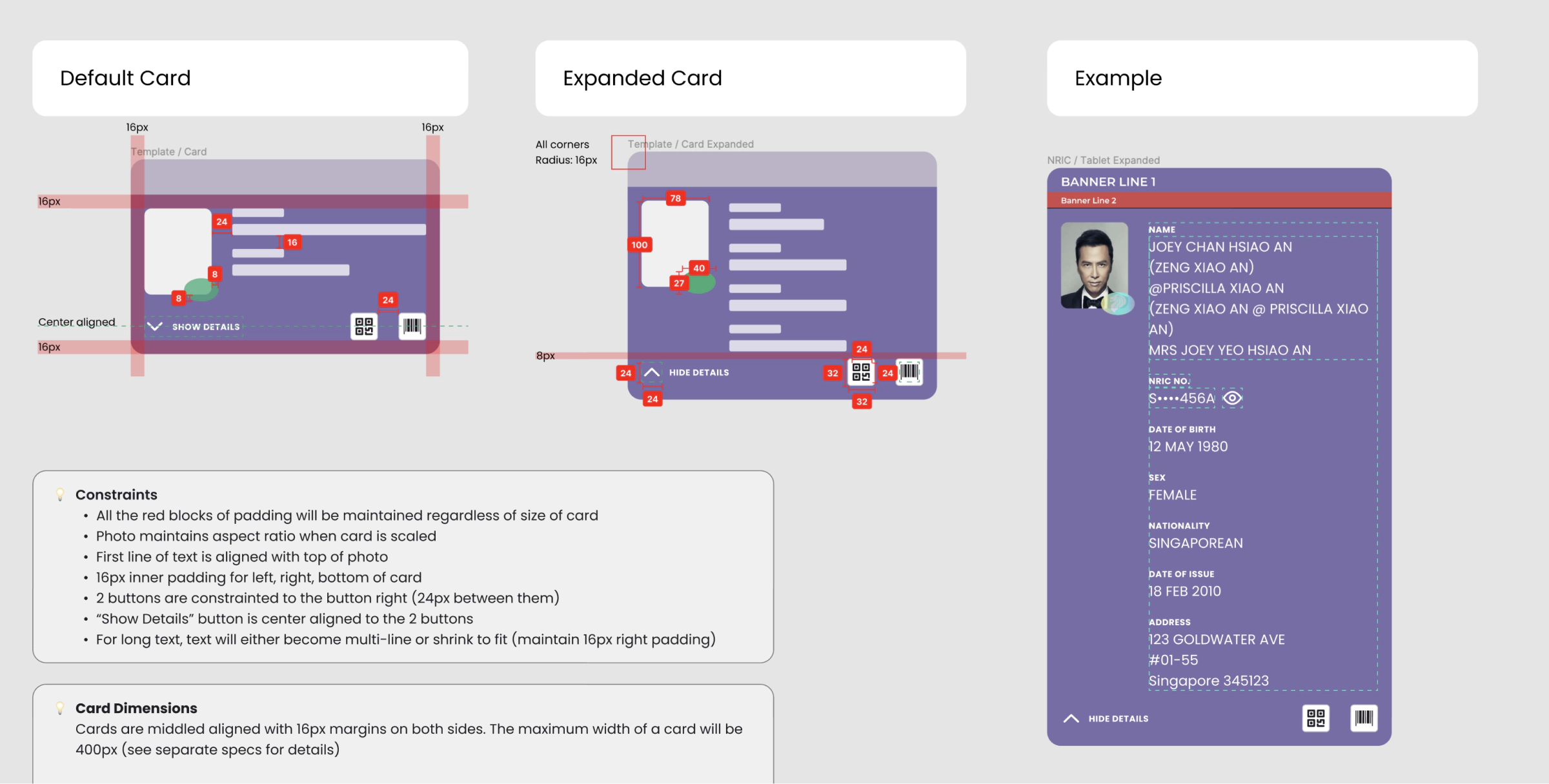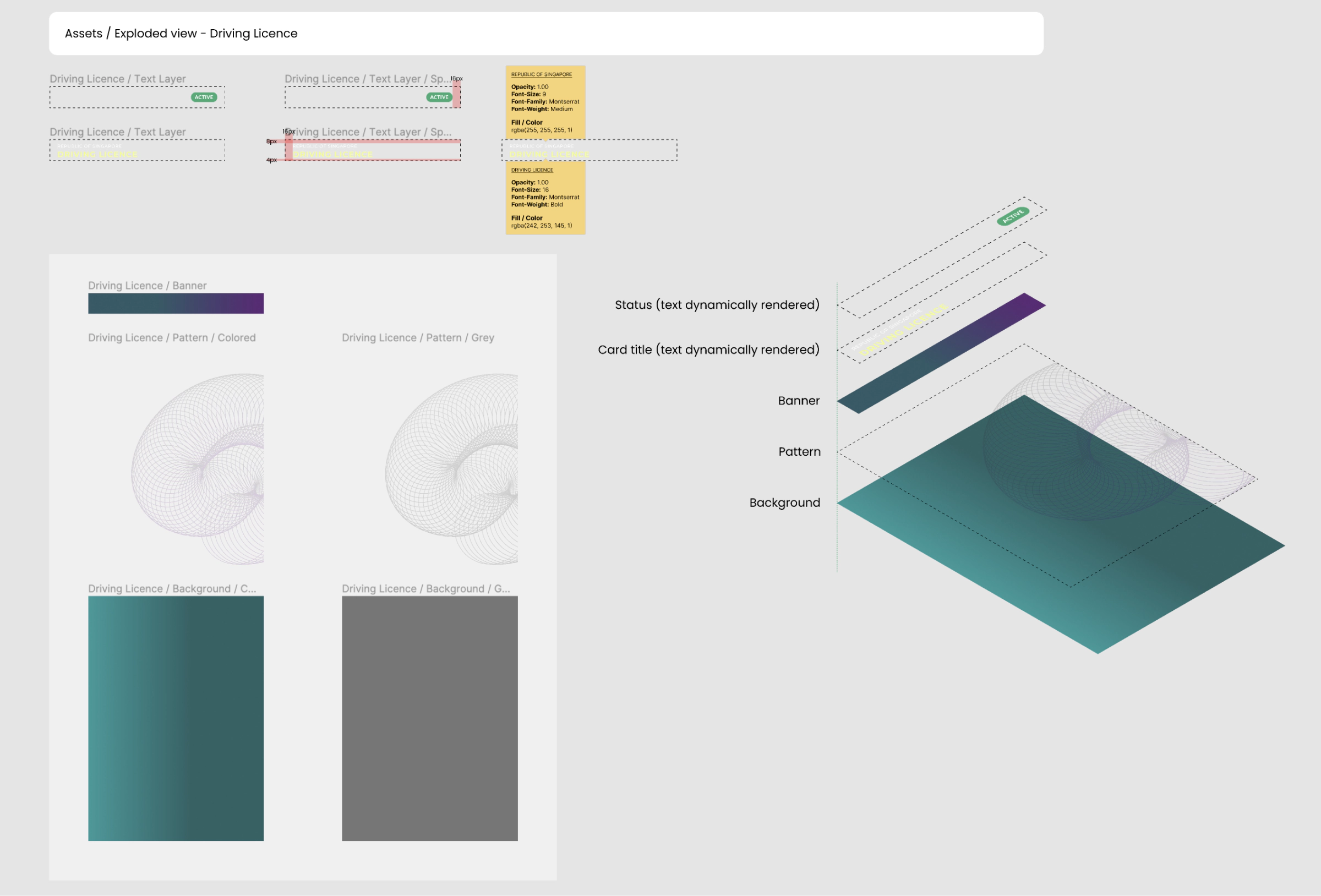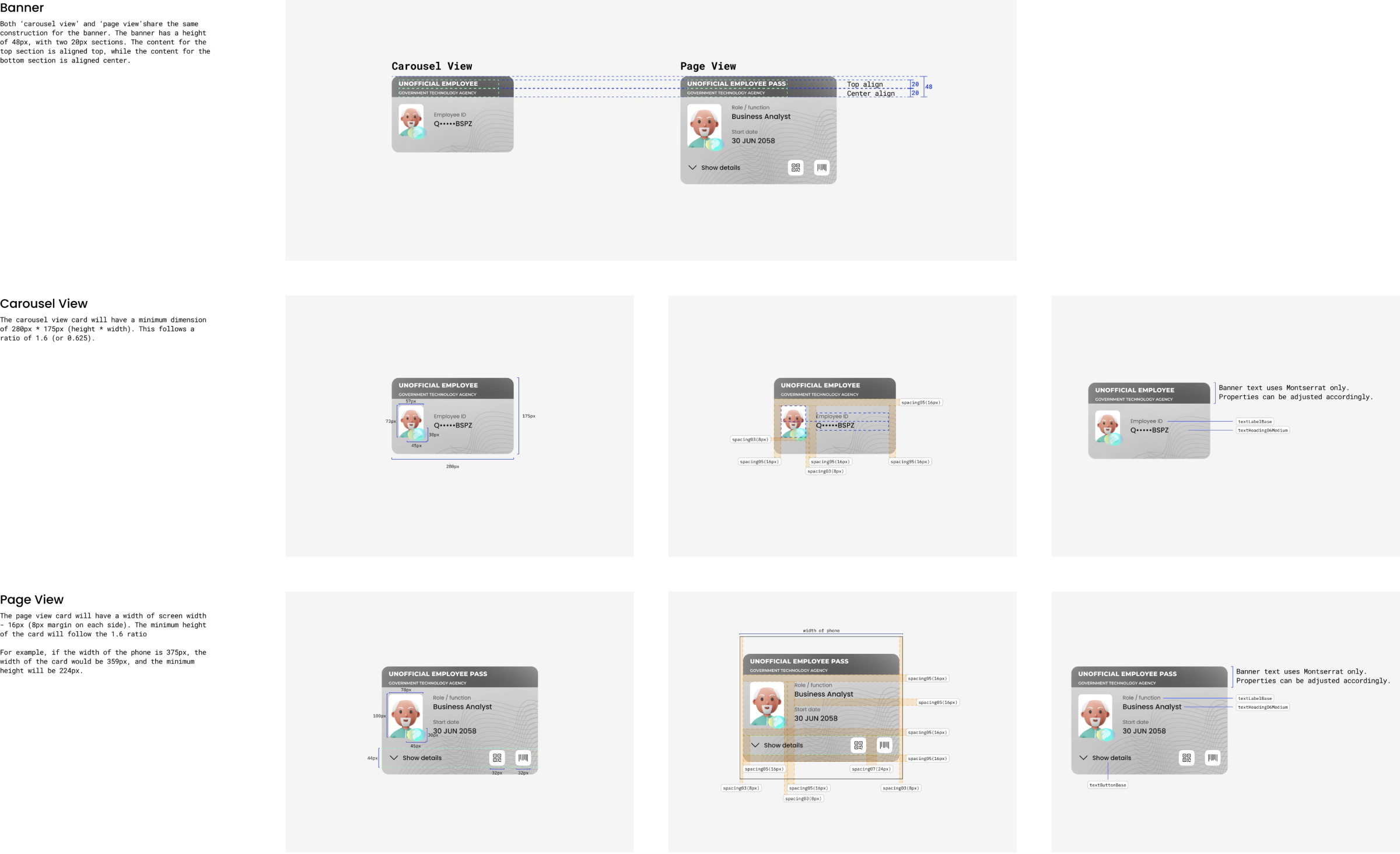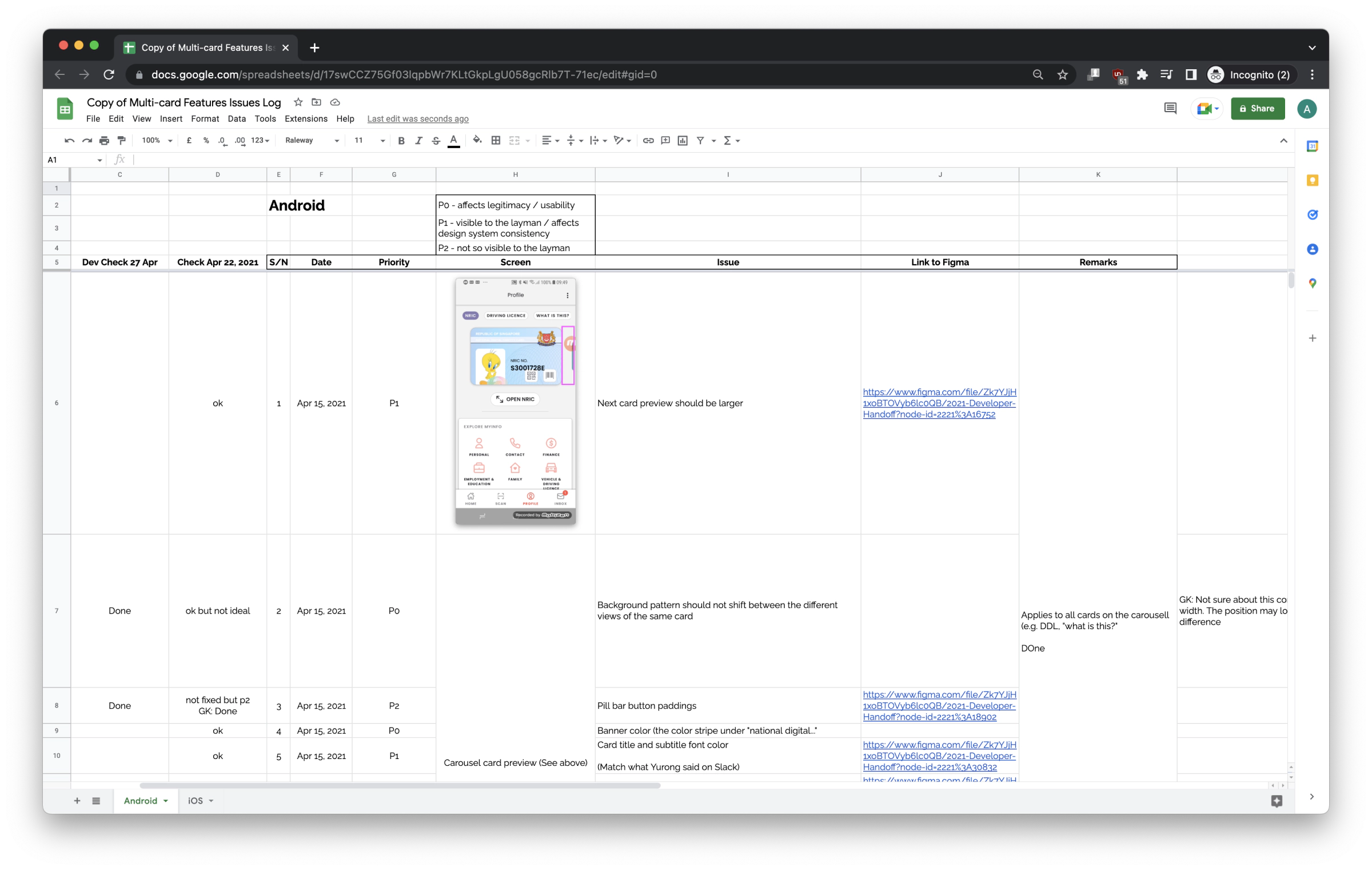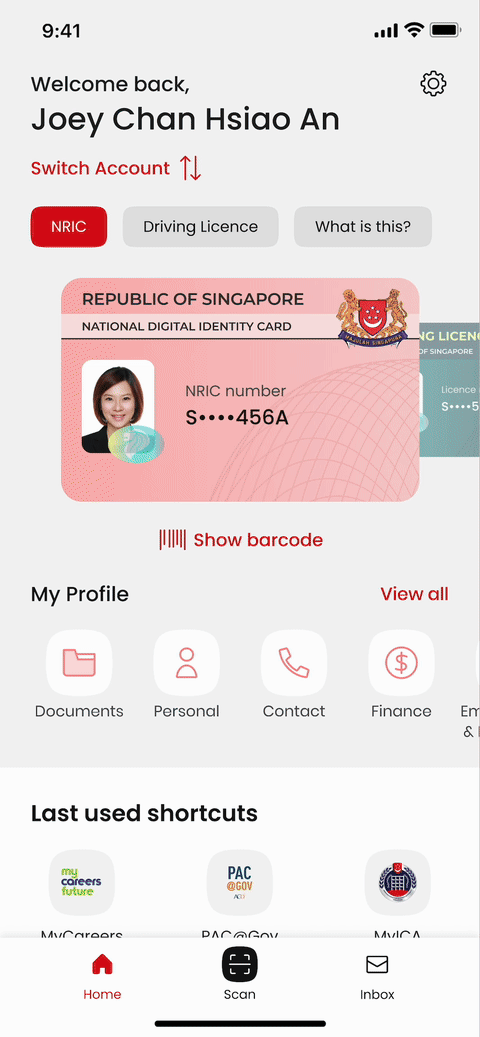About product
Singpass is Singapore’s national digital identity system created by the government of Singapore. It is part of the Smart Nation initiative that aims to leverage technology and innovation to improve the quality of lives for those living in Singapore. Singpass has two key features:
- Single sign on — Use the app as a passkey to log into government services or government-approved services. No need to remember passwords.
- Digital identity cards — Use digital identity cards as an official alternative to physical cards.
About project
In Singapore, the driving license ranks as third most recognized government-issued card behind the passport and the National Registration Identity Card (NRIC). The Singapore Police Force (SPF) was going to stop issuing these physical driving license. The Singpass app team saw this as an opportunity to collaborate with them to create a digital version of this card, which will in turn help the app gain trust (and more usage) from the Singapore public.
What did I do?
Impact
The driving license was officially launched on the Singpass app in March 2022 to its 3.5 million users. This digital driving license is reconized an official form of document that proves one’s qualifications to drive in Singapore, and shows up on the app’s homepage if the user has it.
Furthermore, I created a framework that sped up the alignment process of adding new cards from 18 weeks to 2 weeks. Using this framework, the vocational driving license was launched in March 2023.
Highlights
Three views for enhanced privacy and security
There are three views — (1) small card view on the homepage that shows the user’s unique identifier partially masked, (2) two password-protected views accessible with a PIN or facial recognition. In the password-protected views, users can tap on “show details” to view even more information.

Information is updated dynamically
Leveraging the affordances of a digital medium, information can now be dynamically populated in real time — license status, demerit points, etc. This also serves as a nudge towards the bigger goal of being digital-first.

No repeated information between cards
Again, leveraging the affordances of a digital medium, repeated information is intentionally minimized across different cards.
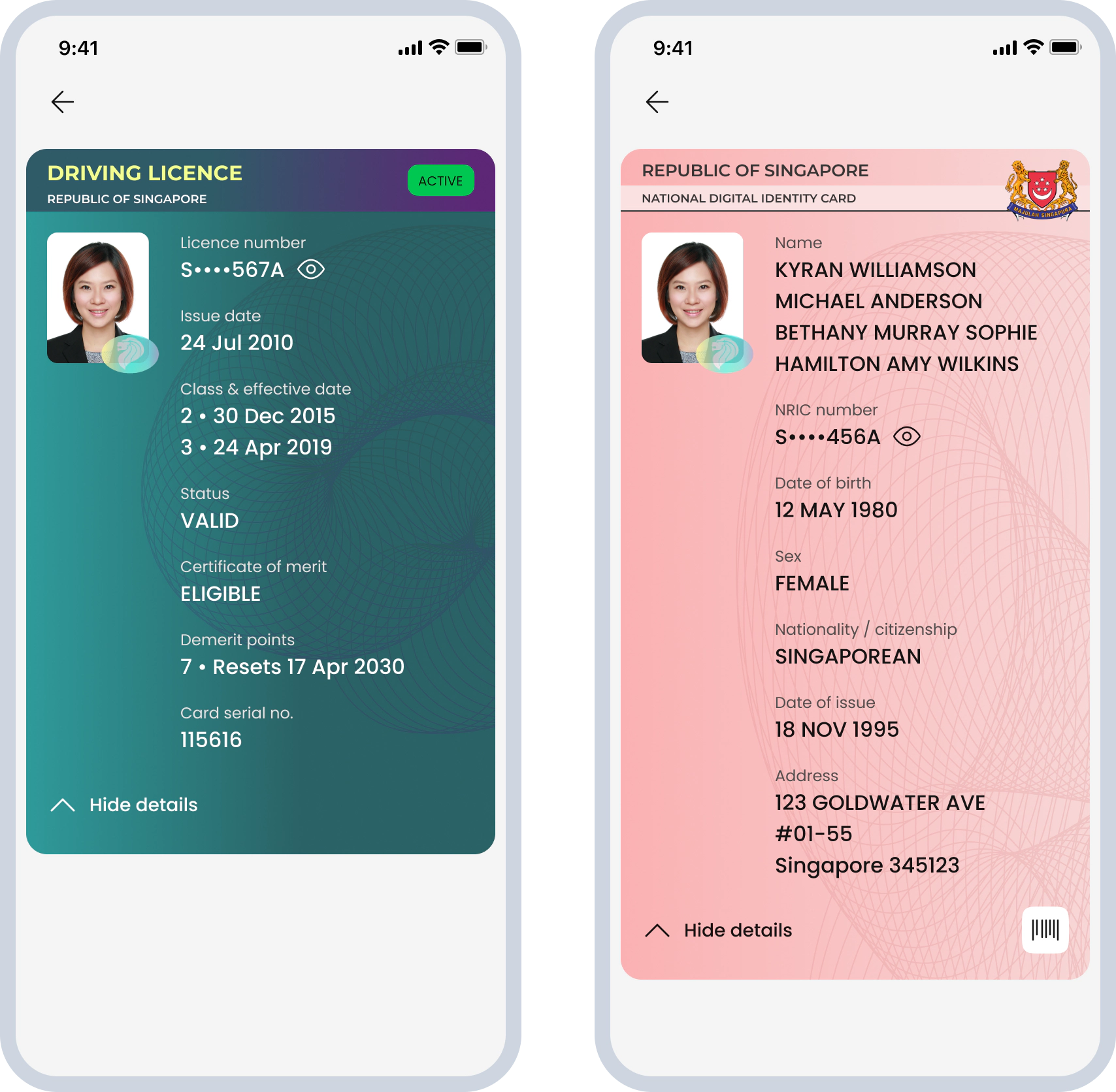
Research phase
Desk research
Another designer and I did secondary research and mapped out the ecosystem of possible touch points of authorities, various entities, and people using driving license.
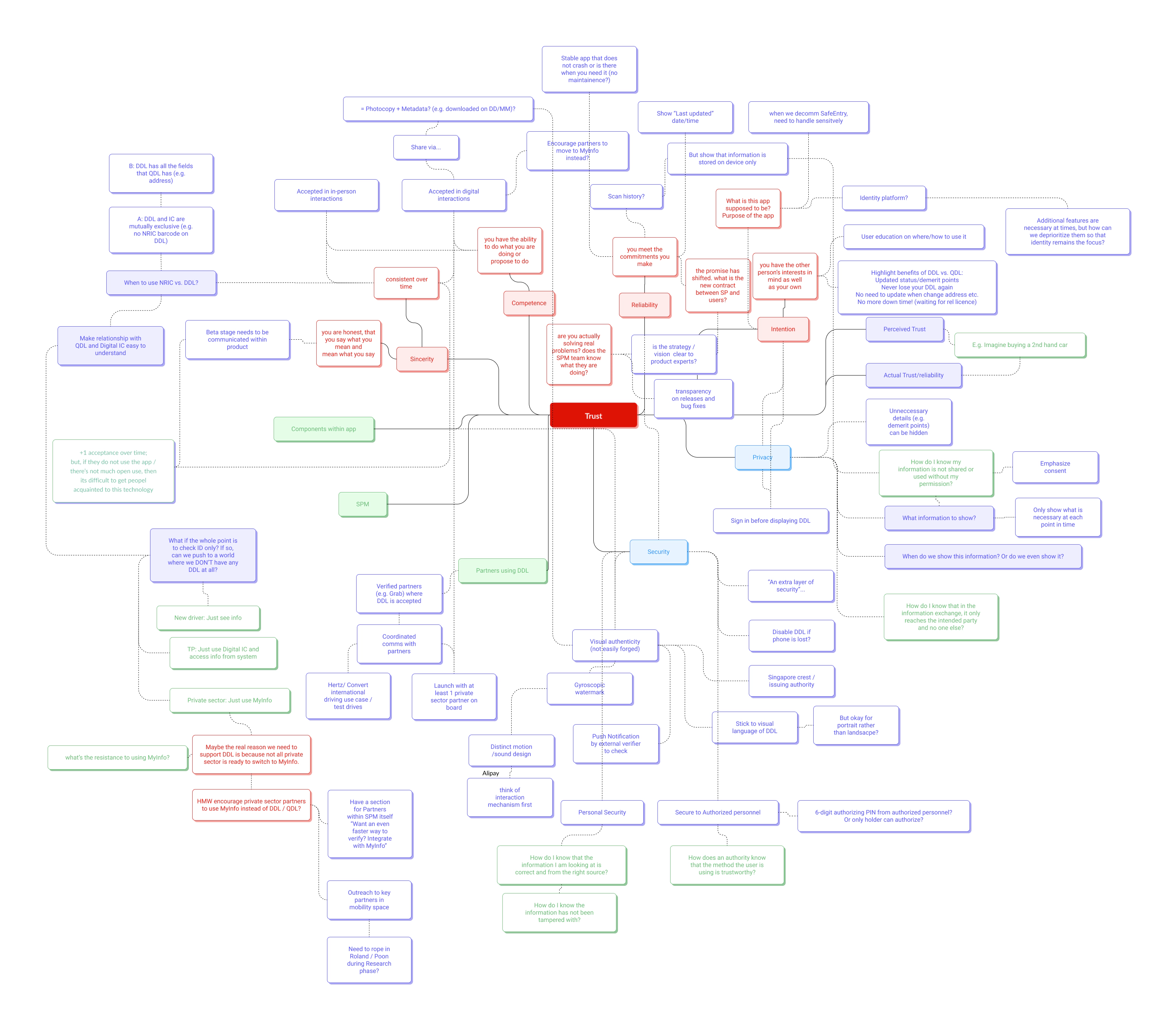
Interviews
The research team and I used sacrificial concepts as the basis of research. These concepts were used to understand understand how they use driving licenses and how moving driving license into a digital medium might positively or negatively affect their work flows.
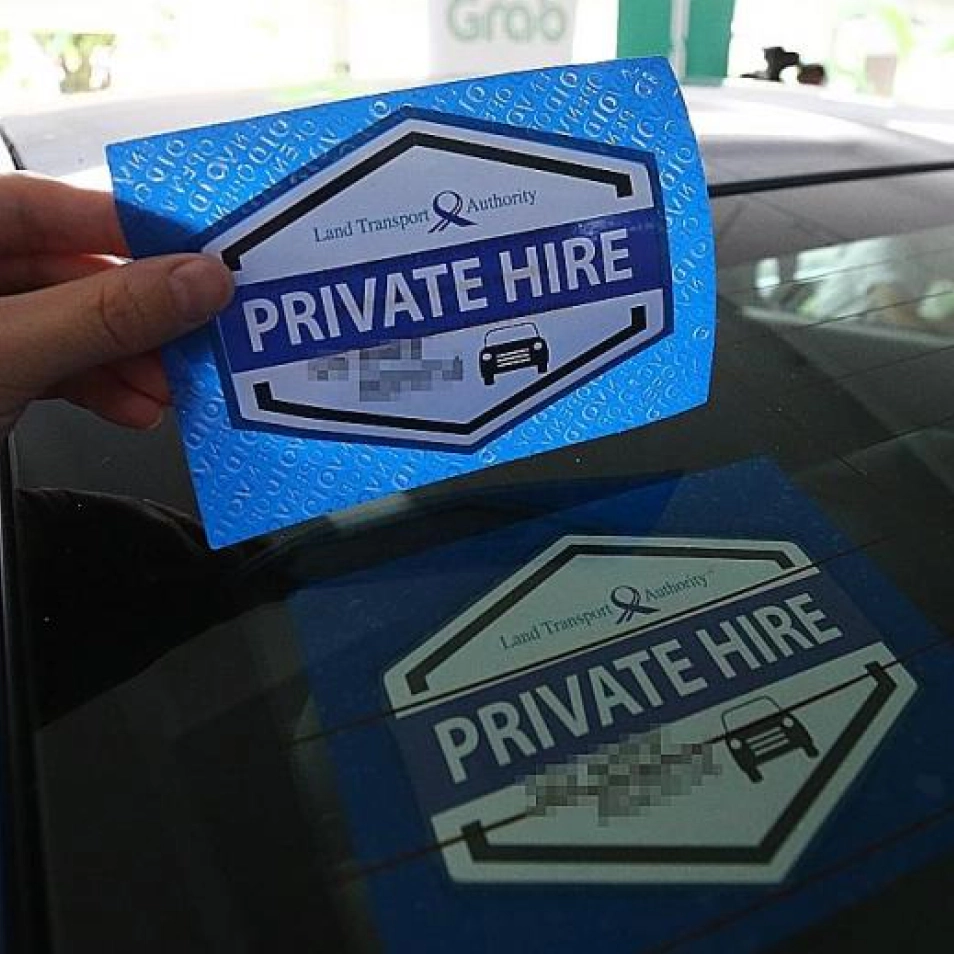
Semi-structured user interviews with businesses
Business like car rental companies, or ride-sharing companies require their customers or employees to verify their qualifications to drive. In Singapore, a separate license is required to work for ride-sharing companies.
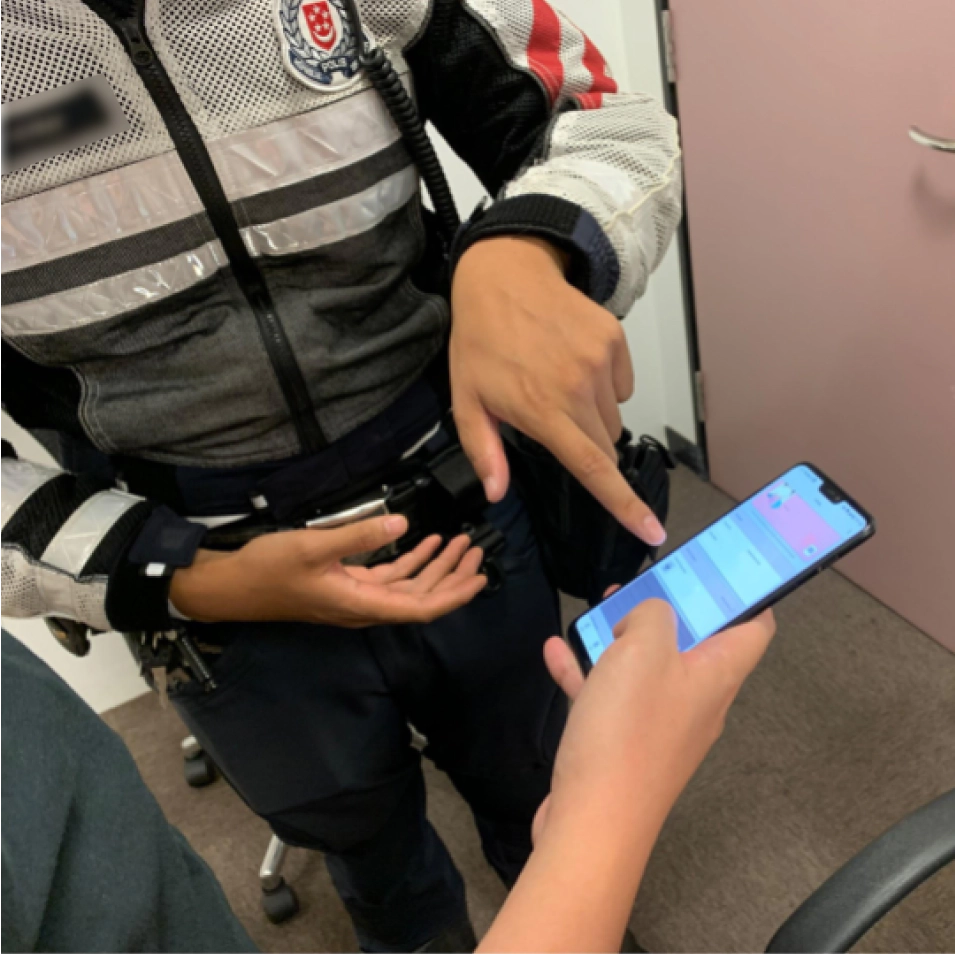
Role-playing interviews with Traffic Police officers
It was important to understand how the driving license was used when traffic police officers pull drivers over by the side of the road.
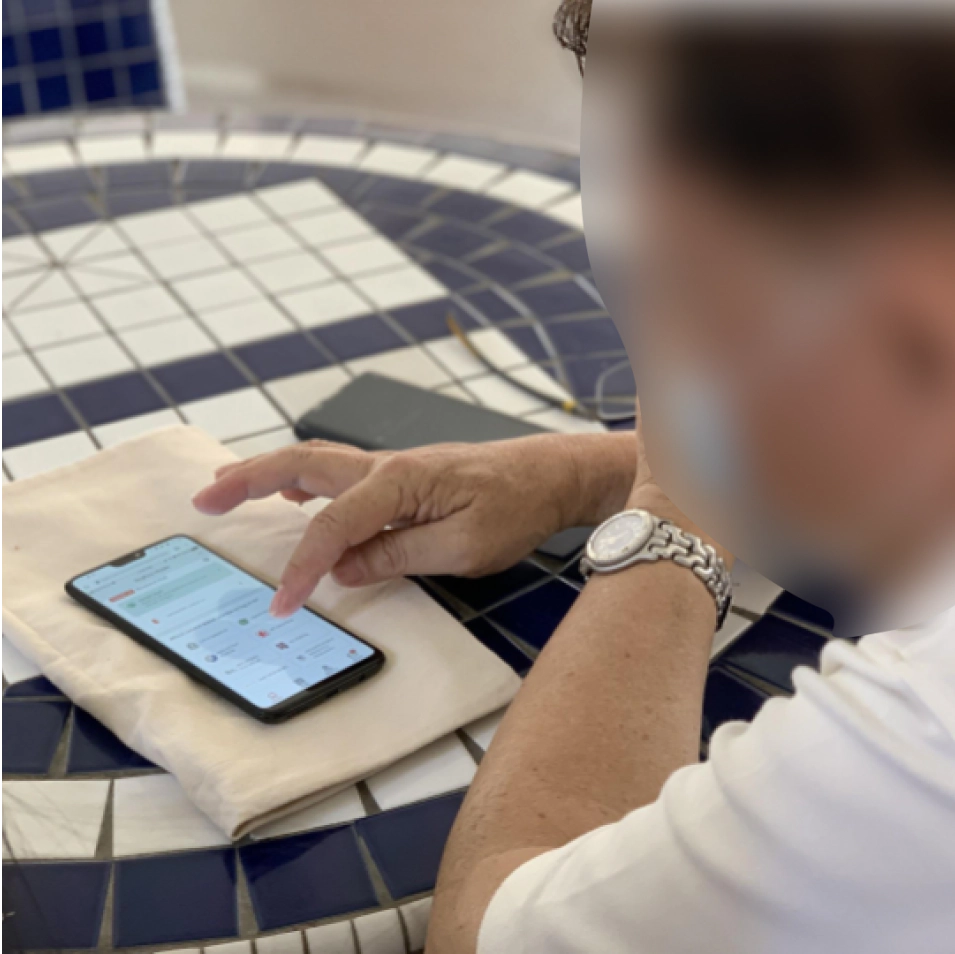
Interviews with prototypes with ride share drivers
Many ride share drivers are not tech-savvy, and it was important for us to understand how they would respond and/or approach using a digital card, a medium that they are not always familiar with.
Design phase
Visual design
Explorations ranged from replicating the original, physical card to using abstract background patterns. The final design uses a dark background to create a perception of legitimacy and for better accessibility for readability.

Refinement
I explored the animation details of how information will be shown or hidden when users tap on “show/hide details”.
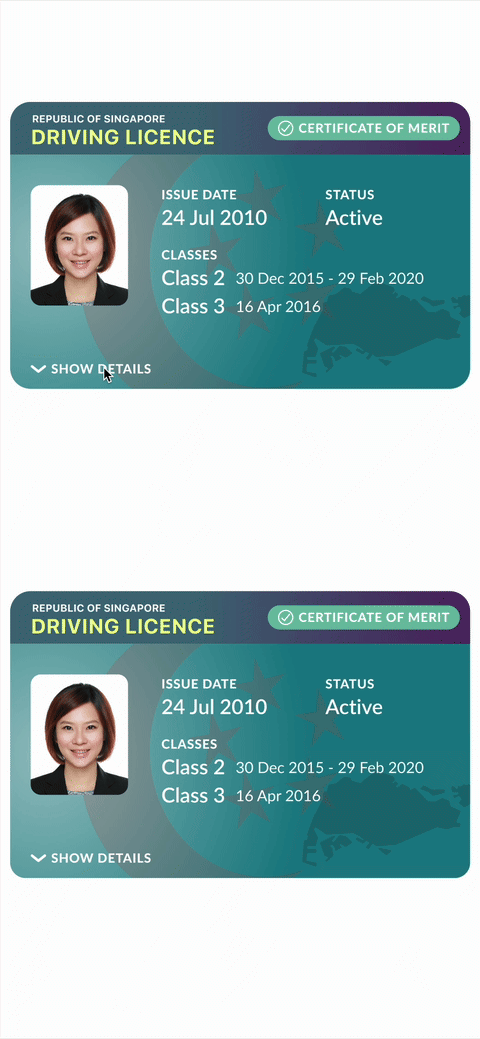
Close collaboration with engineering and product
Engineering and product were part of conversations from the start of the project. This collaborative process helped to reduce crunch time towards the end of the project.
I created detailed specs and documentation, and had a rolling issues log that allowed me to work seamlessly yet asynchronously with the engineering team.
Here are some artifacts:
